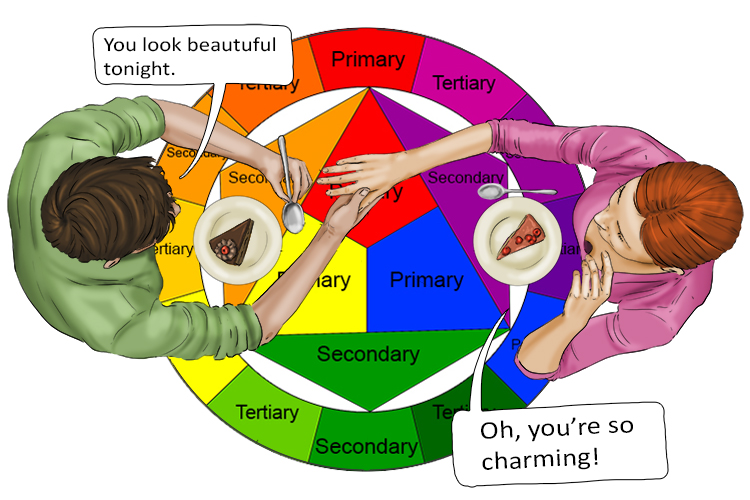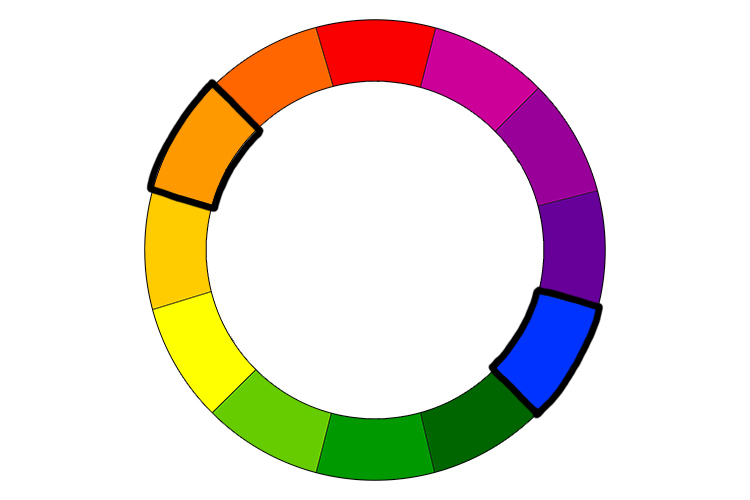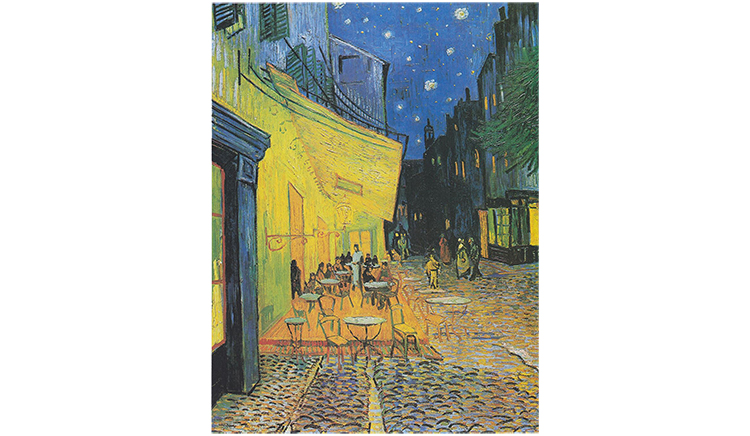Complementary colours – Two colours from directly opposite sides of the colour wheel
(Pronounced kom-pluh-men-tuh-ree)
To remember what complementary colours are, recall the following:

They complimented each other as they sat opposite each other at the table.
COMPLEMENTARY COLOURS = Opposites on the colour wheel
Two colours that sit on opposite sides of the colour wheel are known as complementary colours. They are said to provide high contrast and a high impact when placed side by side, making them appear brighter and more prominent.
Orange and Blue are direct opposites on the colour wheel:

When placed side by side, they bounce off each other, appearing brighter.

In van Gogh's painting Cafe Terrace on the Place du Forum, orange and blue are placed next to each other as purposeful complementary colours. This makes for a heightened visual effect.

Vincent Van Gogh, Cafe Terrace on the Place du Forum, 1888
Again, in Van Gogh's painting The Night Café, he has used the contrasting colours red and green to get the same heightened effect. In this painting, the effect creates a jarring contrast for the inside of the cafe.

Vincent Van Gogh, The Night Café, 1888
Some other complementary colours include red and green, and yellow and purple.





